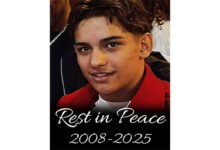Marcia Brady photos that shocked everyone!
When The Brady Bunch hit television screens in 1969, no one expected it to last. Critics dismissed it as sugary fluff — another squeaky-clean sitcom about a picture-perfect American family. But over time, the show became more than just background noise from another era. It turned into a cultural anchor, a nostalgic symbol of a simpler time, and for millions of viewers, Marcia Brady — played by Maureen McCormick — became the face of that innocence.
Behind the smile and sunshine, though, things weren’t nearly as perfect. What happened behind the scenes of The Brady Bunch was far more complicated, human, and at times, messy. McCormick’s journey from teen stardom to personal chaos and back again is one of Hollywood’s most striking stories — a reminder that the golden glow of fame often hides deep shadows.
The Brady Bunch followed Mike and Carol Brady as they merged their families — three sons, three daughters — under one suburban roof. The show’s wholesome themes of unity, love, and lessons learned made it a staple of American television from 1969 to 1974. But its real success came after it ended. Reruns turned it into a cult classic, and by the 1980s, it was practically immortal. What few fans realized, though, was how difficult it had been for the young cast members to live up to the squeaky-clean image the show projected.
On set, McCormick — the perfect, blonde, all-American teenager — was adored by fans and castmates alike. But as fame grew, so did the pressure to maintain that image. She was expected to embody perfection on and off-screen, and that pressure followed her well beyond her teenage years. “Everyone wanted me to be Marcia Brady,” she once admitted. “But I wasn’t her. I was me — confused, scared, and trying to figure out who I was.”
Despite that, the cast bonded like a real family. Between takes, they pulled pranks, shared inside jokes, and supported each other through the chaos of early fame. Barry Williams, who played Greg Brady, famously hid frogs in Florence Henderson’s bed (Henderson, who played Carol, reportedly took it with humor). Other days, the boys would sneak water balloons onto set, or the girls would prank Robert Reed, who played their father, by swapping out his scripts.

That closeness became both a blessing and a curse. McCormick developed a crush on Barry Williams, and the chemistry between them occasionally slipped onto the screen. Fans loved it — it made the Brady siblings’ dynamic even more believable — but it complicated filming. Their off-screen affection often blurred the professional lines, creating tension and, sometimes, heartbreak.
Then came the real struggles. After The Brady Bunch ended, McCormick’s career faced the same problem many child stars encounter: she couldn’t shake her TV persona. Every casting director saw her as “Marcia Brady,” not Maureen McCormick. That typecasting, combined with the intense spotlight she’d lived under for years, sent her spiraling. She began struggling with addiction and mental health issues, including bipolar disorder — battles she later spoke about publicly with unflinching honesty.
“I wanted people to see that I wasn’t perfect,” she said in her memoir. “I wanted them to know that behind every smiling photo was someone who was barely holding it together.”
Her honesty shocked fans who still associated her with the cheerful girl who once chirped, “Oh, my nose!” after a football accident in one of the show’s most iconic scenes. But it also earned her newfound respect. Instead of hiding behind nostalgia, she confronted the darker side of Hollywood — the exploitation, the judgment, and the suffocating expectations placed on young women in the spotlight.
Still, The Brady Bunch had its joyful moments. Many of the show’s most memorable lines and moments were improvised by the cast. Christopher Knight’s delivery of “Pork chops and applesauce,” for instance, wasn’t even scripted. It was a spontaneous line that became one of the series’ most quoted catchphrases. The cast often added their own humor, quirks, and emotions, making the Brady family feel real, even if the setting was idealized.
Behind the laughter, though, each actor carried personal burdens. Robert Reed, who played the patriarch Mike Brady, clashed with producers over creative decisions and hid his sexuality at a time when Hollywood wasn’t accepting. Florence Henderson balanced motherhood with fame, and the younger cast members struggled with growing up in the public eye. McCormick’s own struggles were magnified by tabloids hungry for scandal, and the pressure to stay “America’s sweetheart” eventually became unbearable.
But if there’s one thing that defines Maureen McCormick, it’s resilience. Despite hitting rock bottom in the years after The Brady Bunch, she found a way to rebuild her life. She went through rehab, got help for her mental health, and returned to acting. She appeared on reality shows like Celebrity Fit Club and Dancing with the Stars, where fans saw a version of her that was authentic — no longer trying to live up to Marcia Brady’s perfection, just being Maureen.
Her openness about addiction and recovery also turned her into a quiet advocate for mental health awareness. In interviews, she’s spoken about how she wishes Hollywood had offered more support for child actors. “We were kids,” she said. “We were thrown into fame without any understanding of what it meant. The applause fades, but the pressure doesn’t.”
Even now, decades later, The Brady Bunch continues to air in syndication, streaming on multiple platforms and introducing new generations to the family that started it all. And while the show may seem innocent compared to today’s television, its impact endures because it offered something simple yet powerful — optimism. It reminded audiences that family, no matter how messy or unconventional, could be built on love.
As for McCormick, she has made peace with Marcia Brady. “She’s part of me,” she once said. “I used to hate her because she represented everything I wasn’t. But now I see that she gave me something incredible — she gave me a place in people’s lives. That’s something I’ll always be grateful for.”
Today, McCormick lives quietly, focused on family, health, and gratitude. She’s no longer the flawless teenage beauty the world fell in love with, and that’s exactly how she wants it. “Perfection is fake,” she said. “Real life is messy, complicated, and hard — but it’s real. That’s what matters.”
From the laughter-filled sets of The Brady Bunch to the chaos of addiction, from fame to recovery, Maureen McCormick’s story isn’t about a Hollywood fantasy — it’s about survival, honesty, and growth. She may have played the perfect daughter, but the woman behind Marcia Brady has lived a far more powerful story — one of falling apart, standing up again, and finally learning to breathe on her own terms.

